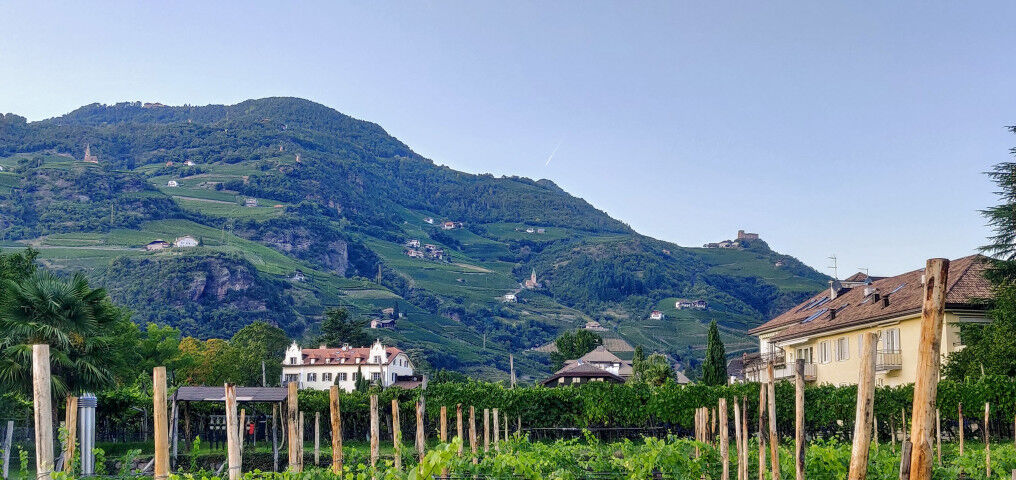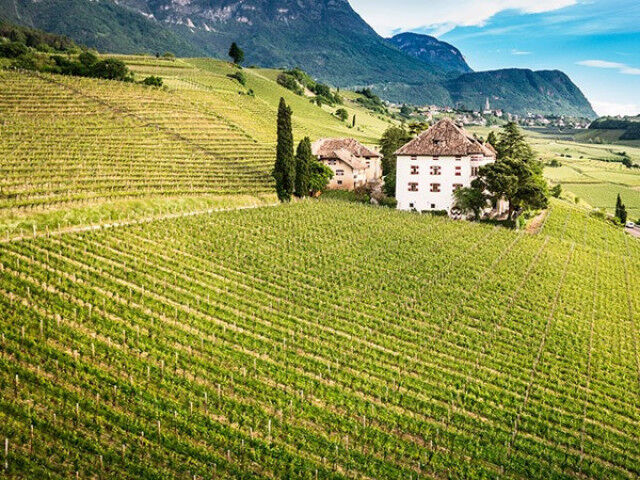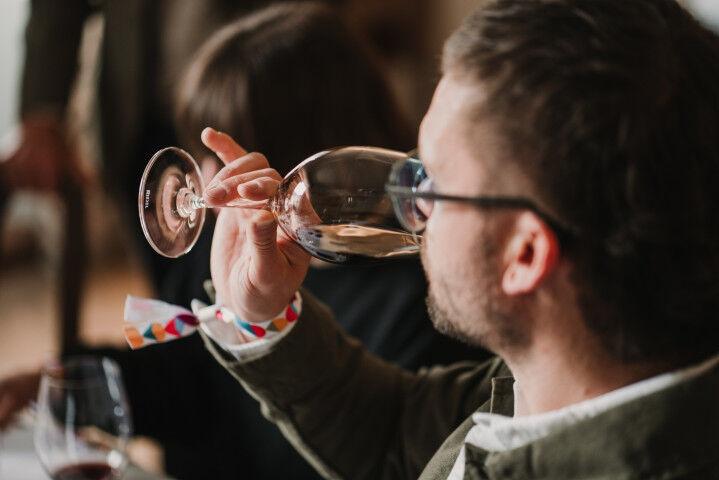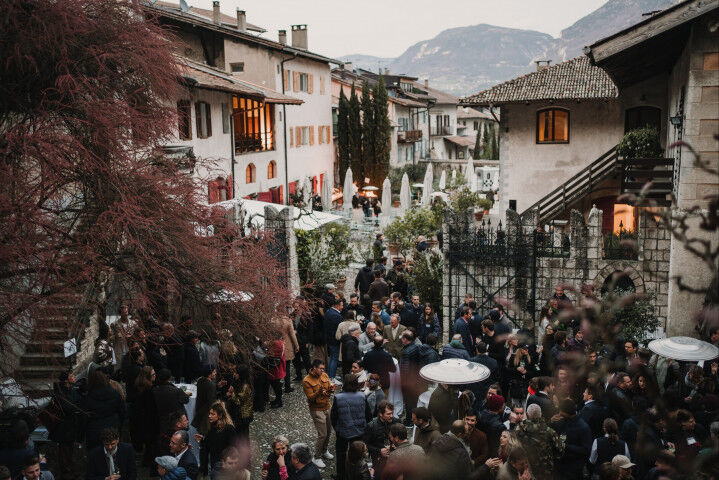Guide to the wines of the Alois Lageder Winery
Discovering the extraordinary wines of Alois Lageder
Lageder is famous for being one of the most important advocates of clean viticulture, applying the teachings of biodynamics summed up in the creed: "work in harmony with nature"; for its holistic and experimental vision in the vineyard and cellar accompanied by a frenetic and careful activity on production diversification; for being one of the most historic wineries in Alto Adige (1823) able to express an impeccable quality of the various labels that translate into character, finesse and territorial conformity.

Alois Lageder and Alto Adige
Convinced that South Tyrol can compete on an international level, Alois Lageder has always based his work on a broad spectrum of grape varieties in order to safeguard the individual characteristics of the land. For decades now, they have been leading the way in South Tyrol with their brilliant ideas concerning the circular economy, and their determination to work out which vines will best adapt to the changing climate of the coming years.
Lageder and sustainability
The company uses only renewable energy sources for the production of both heat and electricity through water: geothermal and solar with a large solar power plant. In addition, transhumance is still practised on the Lageder land with the animals being moved to different seasonal pastures.
Where is Alois Lageder located?
Lageder is located in Magré on the Wine Road (La Strada del Vino), a very old wine and fruit-growing community in the Oltradige-Bassa Atesina region. The winery is now in its sixth generation: for Alois Lageder, "clean" winegrowing means an innate life choice and not a commercially intriguing intellectual indulgence.

History: Alois Lageder
The name Lageder has always been linked to the world of wine in South Tyrol.
The family began selling wine as early as the 19th century, and in 1934 fulfilled a dream by purchasing the Lowengang estate in Magré, where the modern, environmentally friendly winery built in 1995 stands today. In the 1970s, the current owner, Alois IV Lageder, took over the estate together with his sister and her husband and oenologist brother-in-law Luis von Dellemann, introducing strict criteria of qualified production and managing to attain an important share in the various international markets. In particular, since the beginning of this century, he has brought about a profound change in the company, converting the estate vineyards to biodynamic agriculture. Alois Clemens, son of Alois IV, is the CEO of the estate, while his younger sister Helena is the Chief Marketing Office.
The vineyards: Alois Lageder
There are 50 hectares of vineyards which are managed using biodynamic methods: this was a slow conversion that first of all entailed full awareness on the part of the people who work the rows of vines every day. The estates are located on land on the alluvial cone of Magré or on the slopes above the village; others are in Sella di Termeno, around Lake Caldaro, in Appiano and in Bolzano.

Winemaker: Lageder
The winemaking side of the business is entrusted to Jo Pfisterer and Alois Clemens himself. The agronomic side of the business is in the hands of Katharina Alverà (Winegrowing Partner & Head of Agriculture) and Maximilian Feichter (Head of Farming Organisation) respectively.
What are Cantina Alois Lageder's wine styles?
The line is quite clear: freshness and liveliness in the glass; these are the characteristics of the entire range of wines. Personality and elegance are certainly not lacking in the four levels that reflect the oenological diversity of South Tyrol:
- Classic Grape Varieties - bring out the variety of the terroir mainly produced from their own grapes;
- Compositions - obtained by making various interventions during vinification or by using different grapes even from diverse plots of land
- Masterpieces - seek the exclusivity of the vineyard through making selections from the best estate vineyards
- Comets - try to convey in the bottle that spirit of experimentation and research in the vineyard and in the cellar that, above all, distinguishes their philosophy.

Classic Grape Varieties
In the "Classic Grape Varieties" section we find white grapes such as Chardonnay, Pinot Blanc, Pinot Grigio, Müller Thurgau, Gewürtraminer and Sauvignon Blanc; red grapes such as Schiava, Lagrein, Merlot, Pinot Noir and Cabernet Sauvignon. The basic characteristic remains vinification in stainless steel on the fine lees (for about 4 months) with spontaneous fermentation for the whites; while for the reds maceration and refinement in stainless steel, wood and/or cement vats usually lasts about 12 months.
Compositions
In the "Compositions" section there are the same grape varieties as noted above, with the addition of Moscato Giallo and Manzoni. The peculiarity of this division lies in the different uses of ageing, blending and fermentation that can co-exist within the same wine.
Masterpieces
In the "Masterpieces" section we find Petit Manseng, Viognier, Roussanne and Marsanne as new grape varieties, as well as the previously mentioned ones. The aim is to intensify the characteristics of each farmstead, without omitting the fundamental role of animals, for the protection of the ecosystem.
Comets
In the "Comets" section, Sylvaner and Chenin Blanc also appear, again with a view to playing with the various components and above all to studying the behaviour of grape varieties over the next 20-30 years.

What are the best wines from the Alois Lageder Winery?
Löwengang Chardonnay
Löwengang Chardonnay: the first South Tyrolean white wine to make its mark on international markets. A wine that always fascinates with its sumptuous finesse, masterful lineage and deep flavour.

Cor Römigberg
Cor Römigberg Cabernet Sauvignon: a masterpiece of elegance and depth, recognisable by its silky texture and the fine vegetal note that it shares with the great Bordeaux wines.

Krafuss
Krafuss Pinot Noir: a classic among Alto Adige reds, a nectar with a lovely fruity character tinged with pleasant spicy notes; fresh, savoury and properly structured.

Why drink a Alois Lageder wine?
Through a transversal and interdisciplinary approach, Lageder is aware of the fact that it is necessary to seek as much balance as possible between the various elements and to encourage dynamic growth. For them, therefore, wine is not only a beautiful product resulting from the fermentation of grapes, but also a fundamental means of creating a healthy environment both from an environmental and an artistic, cultural and, why not, musical point of view.

all.sign in to leave a review









